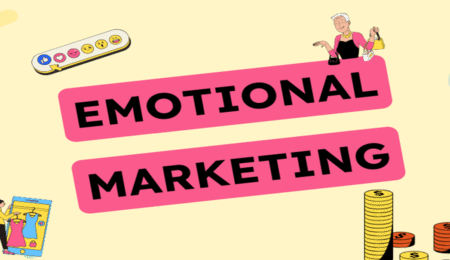Turn Fans Into Marketers With User Generated Content
Have you ever observed that when someone like you raves about a new product online, you’re more willing to give it a try? You’re not by yourself. Nielsen reports that 92% of consumers have greater trust in user-generated content (UGC) than in conventional advertising. Authentic, fan-generated material stands out in a world full of advertisements, whereas well-executed campaigns are sometimes overlooked.
Because of this, user-generated content marketing has emerged as a crucial tactic for companies trying to establish credibility and expand naturally. It’s more than just a catchphrase; it’s one of the best strategies to get your current audience to actively support your brand. Reviews, images, videos, and social media posts are all examples of user-generated content (UGC) that draws from real people, real experiences, and genuine influence.
In this article, we’ll dive into why UGC works, how to encourage it, and ways to use it to amplify your brand’s voice. You’ll also discover practical tips, real-world examples, and creative ways to leverage UGC without breaking the bank.
1. What Exactly Is User Generated Content and Why Does It Matter?
User generated content refers to any form of content—text, images, videos, reviews—created by consumers rather than the brand itself. This kind of content is often shared on social media platforms, review sites, or even directly with companies through contests and campaigns.
What makes UGC so powerful is its authenticity. Unlike branded content, which is carefully crafted and optimized, UGC comes from real people with genuine opinions. It bridges the gap between brands and audiences, creating a sense of community and trust. For example, a customer’s TikTok showing how they use your skincare product in their nightly routine is far more believable than a commercial.
Brands that successfully integrate UGC into their marketing strategies benefit from increased engagement, stronger customer loyalty, and often, viral reach. It’s marketing, yes—but from the mouth of your most trusted source: your customer.
2. The Psychological Power Behind UGC
At its core, user generated content works because of social proof. This psychological principle suggests people are more likely to take action when they see others doing the same. When a potential customer sees a crowd of happy fans using a product, they’re more inclined to believe it’s worth trying.
Consider how often we scroll through Instagram or YouTube looking for unboxings, reviews, or “real user” testimonials before buying. That’s social proof in action. Platforms like Yelp, Google Reviews, and even Amazon thrive on UGC because it drives decision-making.
Smart brands use this to their advantage by regularly resharing customer content, encouraging reviews, and creating branded hashtags that make it easy for fans to contribute. The key is creating a feedback loop where every new customer has the potential to influence the next.
When people see others posting about your brand, it triggers a fear of missing out (FOMO) and encourages them to join the conversation. That kind of momentum can fuel exponential brand growth.
3. How to Encourage Fans to Create and Share Content
You don’t need a million followers or a celebrity endorsement to spark user content. What you do need is a plan to inspire and invite your community to get involved.
Start by making it clear that you value your customers’ voices. Ask for photos, videos, or reviews, and offer easy ways to share them—through branded hashtags, tagging on social media, or uploading directly through your website.
Contests and giveaways are a great tool to get people excited. For example, outdoor gear brand GoPro regularly runs challenges where users submit footage using their products for a chance to be featured. These campaigns not only gather incredible content but also make users feel like part of the brand’s story.
You can also encourage UGC through personalized follow-ups. After a purchase, send a thank-you email that includes a gentle nudge to share a review or a photo. People are more likely to contribute when asked at the right moment—especially if you make them feel like their opinion matters.
4. How to Collect and Curate UGC Without Losing Control
One of the challenges with UGC is managing quality and consistency. You want content that aligns with your brand, but you also don’t want to stifle authenticity.
This is where curation becomes key. Create clear guidelines around what kind of content you’re looking for and how customers can share it. You don’t need to micromanage, but a little direction goes a long way.
Tools like TINT, Stackla, and Yotpo make it easy to collect and moderate UGC across platforms. With these tools, you can pull in tagged content, get permission to use it, and display it seamlessly across your website, email campaigns, or even digital ads.
Always ask for permission before republishing someone’s content, even if they tagged you. Not only is it legally safer, but it also builds goodwill. Many customers are thrilled to be featured, especially if you give them credit and link back to their profile.
By curating and showcasing the best fan-made content, you’re building a library of trust-building assets that can be used across your entire marketing funnel.
5. UGC as a Tool for Conversions and Community Growth
User generated content isn’t just for vanity metrics—it’s a serious driver of sales and community engagement. In fact, UGC can increase conversion rates by as much as 10%, according to research from Nielsen and Comscore.
Imagine a product page filled not only with professional photos but also with real customer photos, reviews, and videos. It paints a complete picture for potential buyers, answers their questions, and builds trust—all without extra effort from your marketing team.
Beyond conversions, UGC is also an engine for community building. When people see their content shared by a brand, they feel a deeper connection. That recognition turns customers into fans—and fans into advocates.
Brands like Glossier, Starbucks, and Nike have built cult-like followings in part by constantly uplifting and sharing their audience’s content. It’s more than just marketing—it’s community co-creation. And in today’s competitive landscape, that kind of loyalty is gold.
6. Real-World Examples of UGC Success in Action
Plenty of brands are already winning big with user generated content—and you can learn a lot from their strategies.
Take Airbnb, for example. Rather than rely solely on corporate photos, they showcase guest-taken photos of unique stays around the world. It creates a real, relatable vibe that’s more powerful than stock photography.
Coca-Cola’s “Share a Coke” campaign is another classic UGC success. By putting people’s names on bottles, they encouraged fans to share personalized Coke photos across social media. It turned a simple product into a social experience.
This move not only generated thousands of posts but also positioned the brand as inclusive and body-positive—values that deeply resonate with their audience.
These examples prove that with the right invitation and platform, your customers are ready to become storytellers for your brand.
Conclusion
User generated content marketing is more than a trend—it’s a powerful, sustainable strategy for brands looking to grow with authenticity and trust. By tapping into the voices of real customers, you create a flywheel of engagement, community, and conversion that traditional advertising simply can’t match.
We’ve explored what UGC is, why it works, and how you can harness it—from sparking participation to curating and using content across your channels. Whether you’re a small business or a global brand, there’s never been a better time to turn your customers into your most powerful marketing asset.


